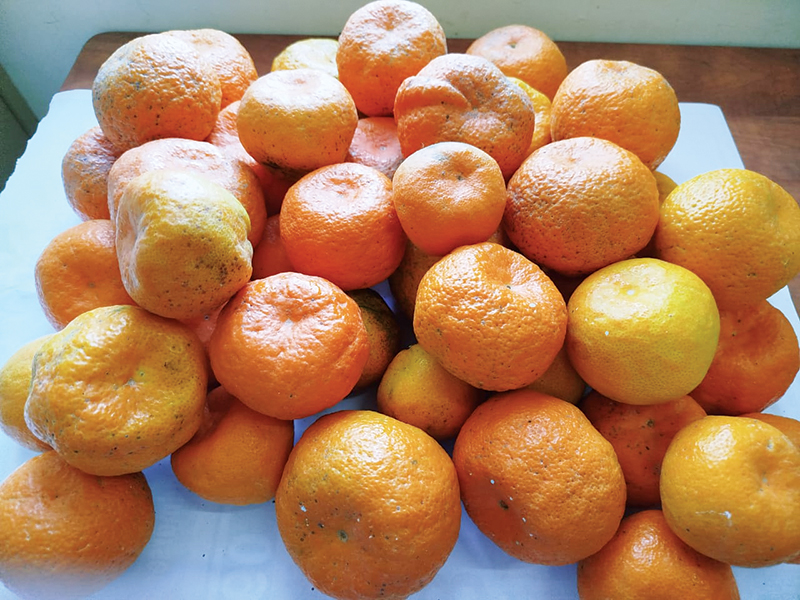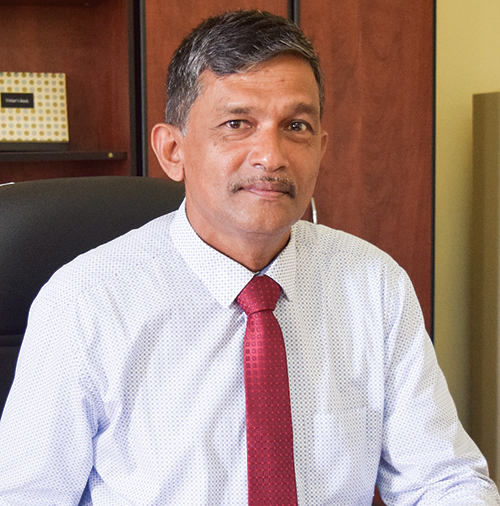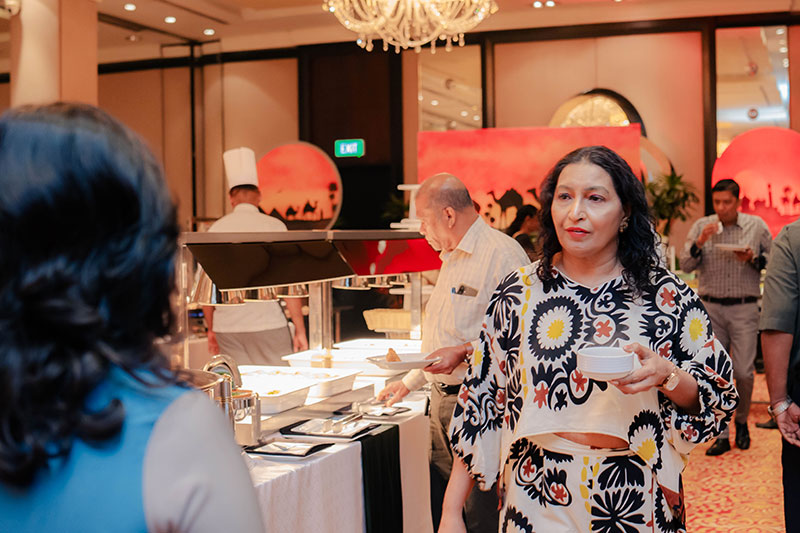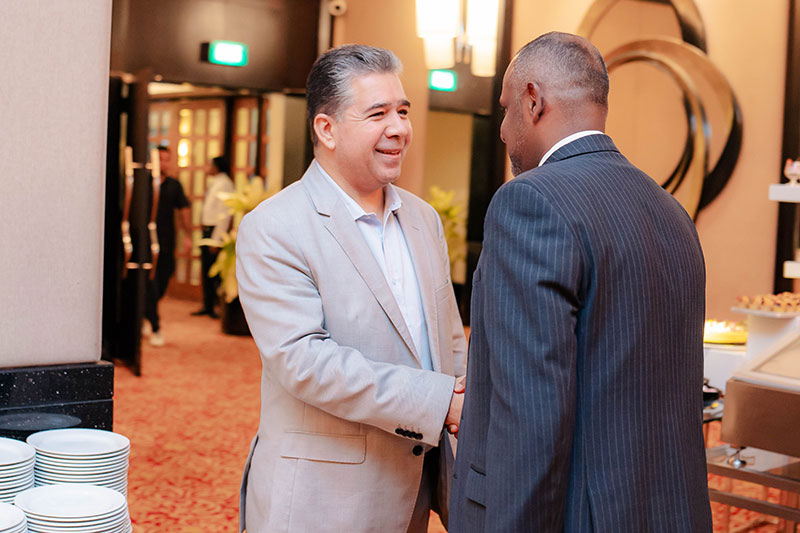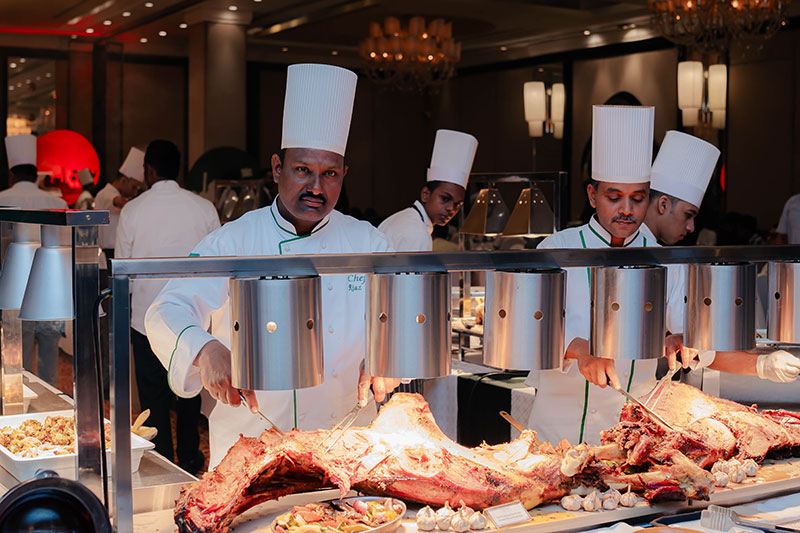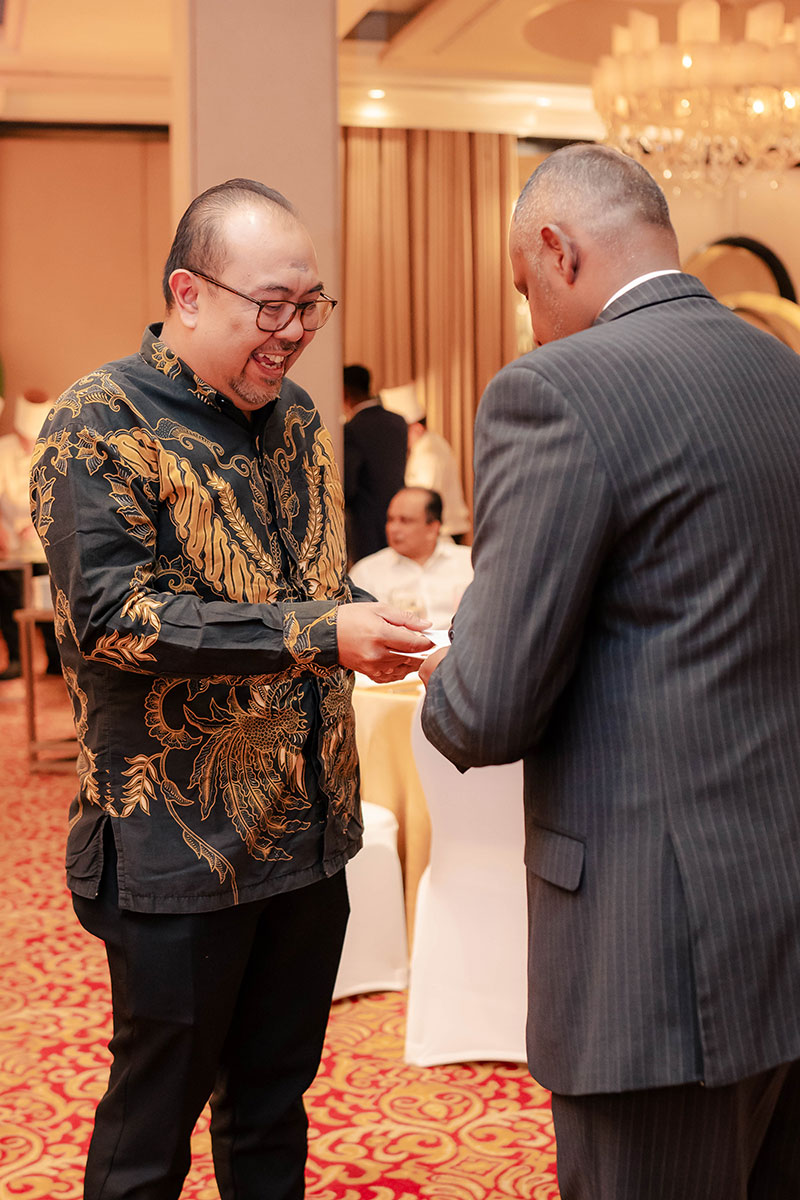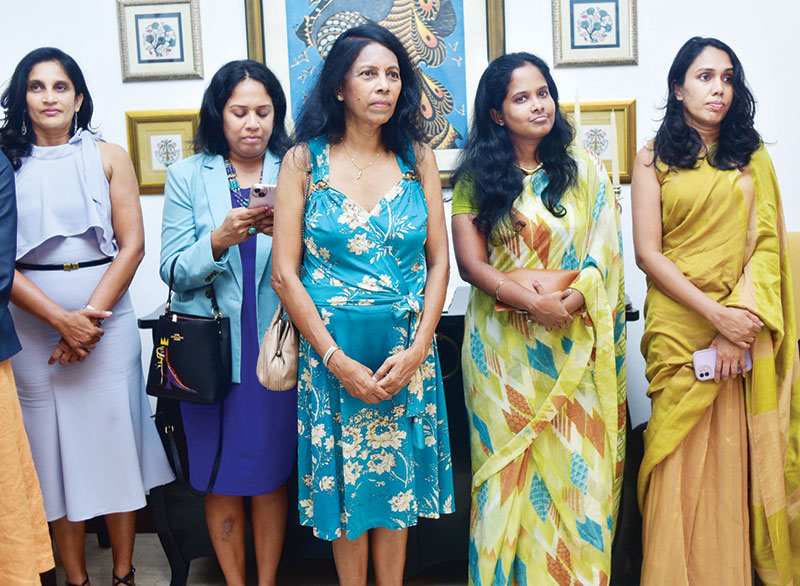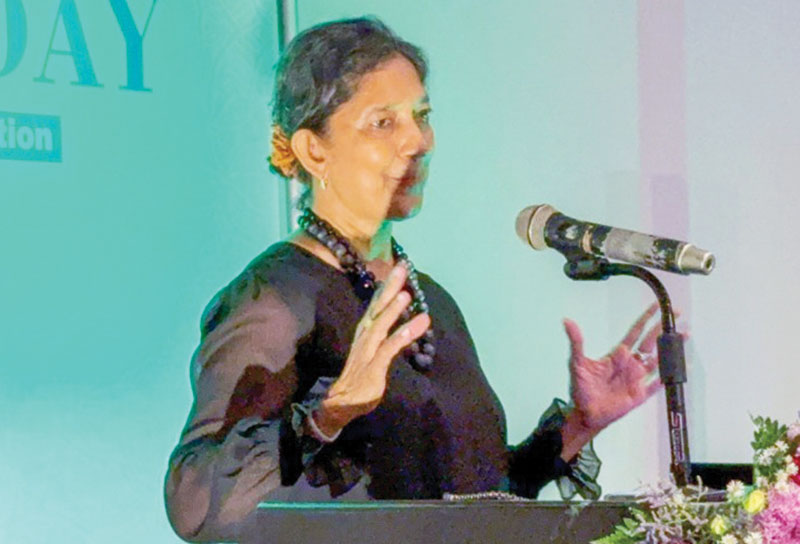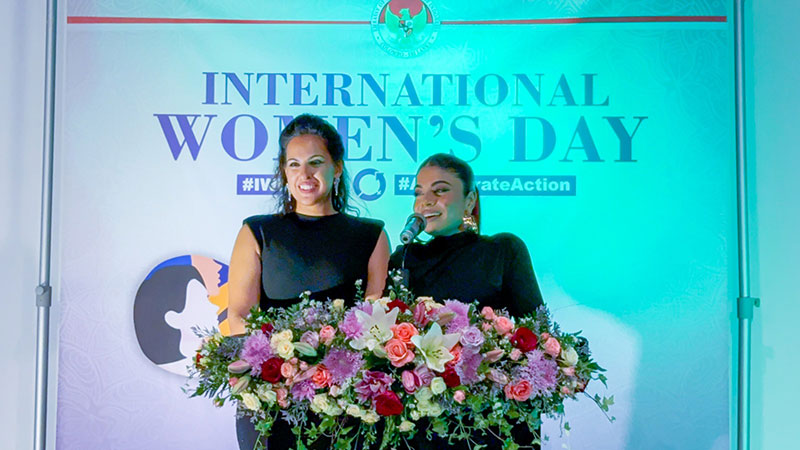Life style
Forgotten exotic yellow mandarin calls for renewed interest
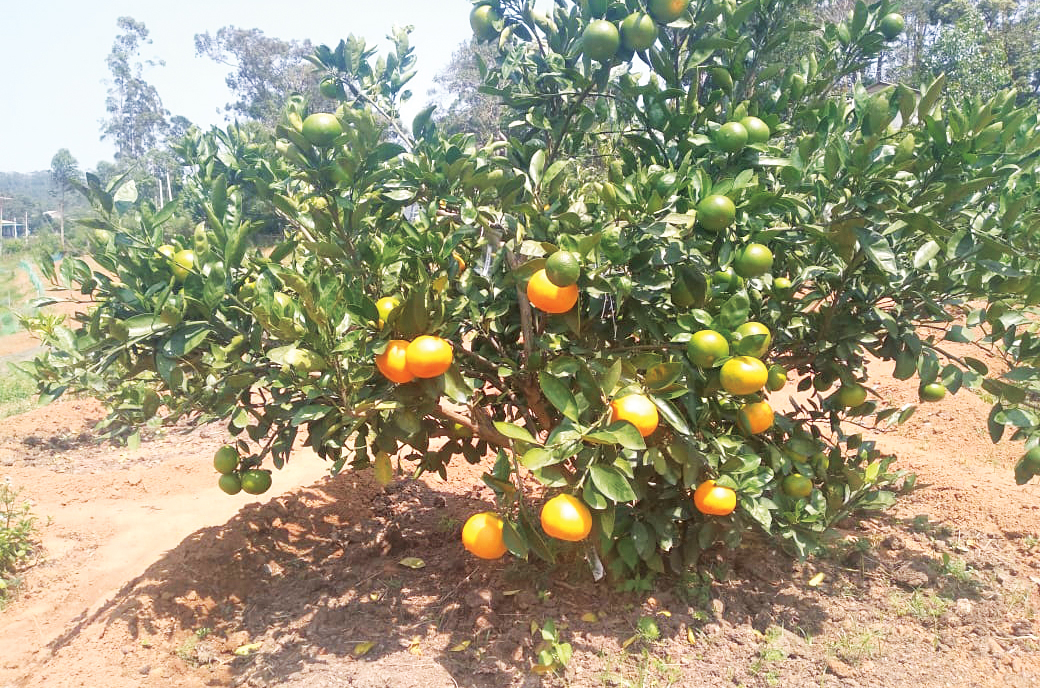
- The exotic yellow mandarin introduced from Japan thrives in the agro-climatic conditions of Bandarawela and Rahangala
- The abandoned tea estates in the area are ideal for the commercial cultivation of the crop
BY RANDIMA ATTYGALLE
Sri Lanka’s orange and mandarin imports alone recorded 8,135 mt. in 2022, according to Department of Agriculture’s (DOA) statistics. This corresponded to Rs 1.158 Million. The sizable annual expenditure incurred for mandarin imports could be significantly reduced if locally cultivable varieties could be promoted among farmers and potential large scale fruit exporters, Former Director of the Fruit Research and Development Institute, (FRDI) W.D. Lesly tells the Sunday Island. The scientist who had done extensive research on Sri Lanka’s potential for the yellow mandarin, encourages cultivators from areas such as Bandarawela and Rahangala where the crop thrives, to take a renewed interest in it.
Mandarin botanically known as Citrus reticulata is considered to be a distinct species of Citrus genus. The mandarin is smaller and oblate and is sweeter and stronger in taste than the common orange. Mandarins are usually easier to peel and to split into segments than the common orange.
China is the top mandarin producing country today. Spain, Turkey, Morocco and Japan are also among the other leading mandarin producing countries.
Premium Japanese varieties
In 2006 Lesly who was then a fruit scientist at the FRDI, was sent to Japan for a one-year training in mandarin research. “FRDI had a collaboration with Japan’s Ehime Prefectural International Center (EPIC) and Ehime Fruit Tree Research Station. And as part of this programme, I had the good fortune of getting hands-on-experience in Ehime which the Japanese call the ‘Citrus Kingdom.’ Ehime is Japan’s largest citrus-producing region.”
After completing his training in Japan, Lesly introduced eight premium Japanese varieties of mandarin to Sri Lanka which he trialed in eight different agro-climatic conditions across the island. The varieties were trailed in Horana (where FRDI is located), Angunukolapelessa, Gannoruwa, Seetha Eliya, Bandarawela, Rahangala, Girandurukotte and Monaragala.
- Mandarin of Ehime in Japan
- Lesly immersed in research
After seven years of extensive research which tested the crop’s yield, fruit quality and adaptability, in 2013 three out of the eight varieties were identified as the best to suit the climatic conditions of up country intermediate highlands. “This region is the one that is closest to Japan’s Ehime’s agro-climate in which mandarin thrives. Today Bandarawela and Rahangala which have a cool-dry climate and lie 3,800 ft above sea level, are considered to be the best mandarin-growing regions here at home. This particular environmental condition is essential for turning the fruit peel colour to yellow when ripened and to develop the deep yellow colour and sweetness of the pulp.”
The three exotic varieties which were recommended and released for cultivation by the Varietal Release Committee of the Department of Agriculture are known as Horana-Ehime 1, 2 and 3 in recognition of the FRDI-Ehime collaboration. “In terms of the quality and taste, these three varieties are on par with the yellow mandarins which are imported. We largely import the fruit from Pakistan and India incurring a significant expenditure. In 2022 alone, we have imported 8,135 Mt. of orange and mandarin worth of Rs. 1,158 million.”
High yielding crop
Since the release of the three promising high-yielding varieties more than 10 years ago, the interest taken in them by local farmers is still minimal, laments Lesly who calls for renewed interest in this high-yielding crop. Lesly who succeeded in securing funds for the expansion of the crop under Council for Agriculture Research Policy (CARP) and Korea Plant Industries Association (KOPIA) distributed nearly 30,000 plants among farmers under the two schemes. The sales center of seed and planting material development center in Kahagolla and Agriculture Research Station in Rahangala provides planting materials of these mandarin varieties to farmers today.
The crop’s harvesting seasons are from March to April and August to September. “The demand for these varieties are high and the local produce is bought predominantly by supermarkets in the area. The fruit is also seedless and contains a higher quantity of beta-carotene than common mandarins” says Lesly.
Utilizing abandoned tea lands
Although ideally promoted as a monocrop, the yellow mandarin can also be grown along the land borders of large vegetable plots, points out the scientist. “The fruit yields a bumper harvest in prime vegetable-growing areas of the country. Since the farmers prioritize vegetable cultivation in the area, not much importance is still given to this promising crop,” says Lesly who goes onto note that abandoned tea lands of up country intermediate zone are ideal for commercial cultivation of the crop and calls upon fruit growers to come forward to invest in it.
Life style
Celebration of unity and tradition at Iftar dinner
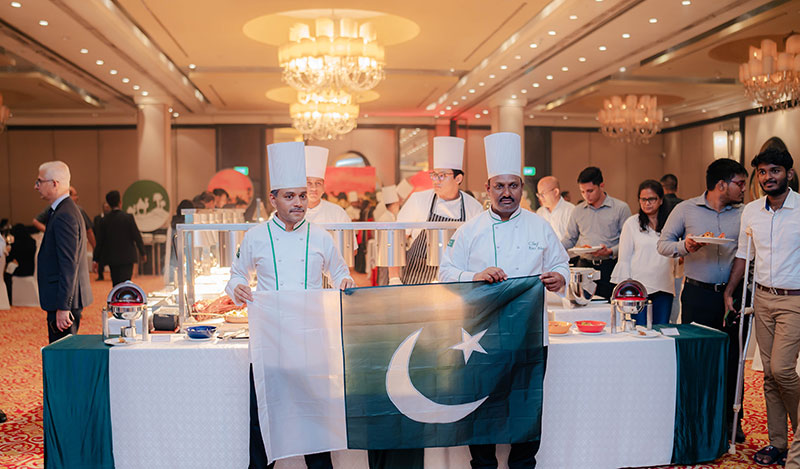
In a grand celebration of unity and tradition, Cinnamon Lakeside Colombo hosted an exclusive and elegant Iftar dinner at the prestigious King’s Court. This remarkable evening, hosted by Nazoomi Azhar, General Manager of Cinnamon Lakeside Colombo, brought together a distinguished gathering of ambassadors, key figures, top corporate executives, and esteemed members of the media.
The event showcased a spectacular array of culinary delights, with a highlight being the masterpieces crafted by renowned Pakistani Chef Riaz Bhatti. His exquisite creations, alongside an extensive selection of traditional and contemporary delicacies of Pakistani dishes, left guests in awe of the lavish spread and exceptional flavors.
Among the standout dishes of the evening were the rich and aromatic Mutton Raghni Josh, the flavorful Mutton Shahi Qorma, and the perfectly spiced Peshawari Beef Chapli Kabab. Guests also delighted in the Lahori Chicken Tikka Boti and the indulgent Chicken Peshawari Karahi, which added a taste of authenticity to the menu. The Iftar spread was further complemented by traditional desserts such as Gulab Jamun, Shahi Tukda, and Ras Malai, providing a sweet ending to the feast.
The atmosphere was one of warmth and hospitality, reflecting the spirit of Ramadan while offering a truly memorable experience. Guests were highly impressed with the impeccable service and the thoughtfully curated menu, making this Iftar dinner a standout occasion in Colombo’s social calendar.
Cinnamon Lakeside Colombo, under the leadership of Nazoomi Azhar, continues to set the benchmark for luxury hospitality, delivering unforgettable experiences through its commitment to excellence.
Life style
Women -building blocks in shaping history of Turkiye
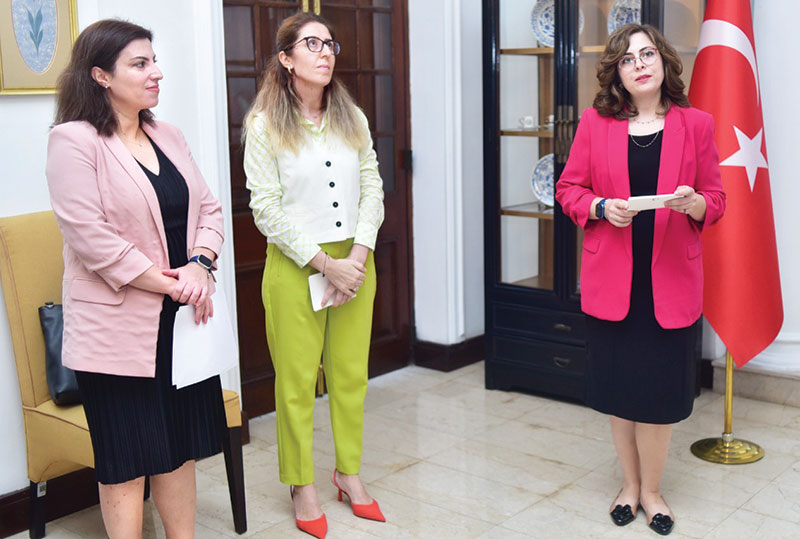
 In the Republic of Turkiye women have been one of the building blocks in shaping Turkiye for centuries. However, especially since the founding of the Republic, Turkiye has been one of the leading countries in the world, especially in terms of the political visibility of women. Women were given the right to vote long before women were given political rights in many democratic and modern countries.
In the Republic of Turkiye women have been one of the building blocks in shaping Turkiye for centuries. However, especially since the founding of the Republic, Turkiye has been one of the leading countries in the world, especially in terms of the political visibility of women. Women were given the right to vote long before women were given political rights in many democratic and modern countries.
Turkish women are known for their unwavering determination and resilience. They exhibit remarkable dedication and courage in pursuing their goals and challenge injustice. Their hard work and perseverence contribute to their advancement of society. These statements were expressed by the Deputy Chief of Mission of Turkiye M/S Merve Goozde Otlu at the residence of the Turkish Ambassador in Sri Lanka, on the occasion of the International Women’s Day.
This day is also important for Turkish women, who have played a vital role in shaping Turkish society, from the early days of our Republic to the present said the Deputy Chief of Mission. In her speech she also pointed out that the founder of the Republic, Mustafia Kemal Ataturk, has an important place in the hearts of all Turkish people, but his visionary leadership for women’s rights are especially precious for all women of Turkiye.
She explained “Ataturk strongly believed in women’s equality and emphasized that a modern and progressive society could only be achieved if women had equal opportunities as men’’
“Women were encouraged to participate in all areas of life, including education, work life and politics. One of the most remarkable steps Ataturk took was granting women the right to vote and as early as 1930, women were able to run for office at the local elections and in 1934 women were granted this right long before many other countries (One year after that, there were already 18 women MPs). When we look at Turkish history, we see countless inspiring women who have shaped our country, playing crucial roles achieving many milestones. These women have proved that Turkish women could achieve greatness in any field from science to business, from arts to sports, if given the opportunity, she remarked.
Turkish women have also made a significant contribution to diplomacy, a field often seen as male-dominated, she remarked.
For decades, Turkish women have been representing our country with strength and determination on the global stage. The first woman diplomat Mrs. Adile Ayda was recruited in 1932, while Ambassador Filiz Dinemen is the first woman Ambassador of Turkiye, assigned to the Hague in 1982.
Women representation has been increasing in the Ministry of Foreign Affairs, constituting almost 40% of the Ministry.
It is a personal honour for me to serve in a country like Sri Lanka, which gave the world the first female Prime Minister in history, Sirimavo Bandaranaike, she said with pride.
Her leadership showed that women can take on the highest responsibility and be a driving force not just for women but for the whole society.
The contribution of women in Turkiye in the field of Science and Technology is far reaching. She said in Turkiye, a prominent scientist who worked for NASA, whose research was instrumental in the legendary 1962 Apollo mission. She is Dihlhan Eryunt, was the recipient of the NASA Appolo Achievement Awards she said with pride.
The First Secretary, Imren Kaygisiz said Turkish women who have contributed to the development of the country and thier enduring impact on society who are still continuing to inspire strength,resilience and success of women
The Commercial Counsellor M/s Gamze Erc an also paid tribute to the founder of Modern Republic of Turkiye, Mustafa Kemal Ataturk who gave importance to education of Turkish women and leader believed that development of a nation depends on a strong education foundation.
The evening had all the trappings of glamour followed by high tea.
Life style
Sri Lanka showing strong commitment to gender equality
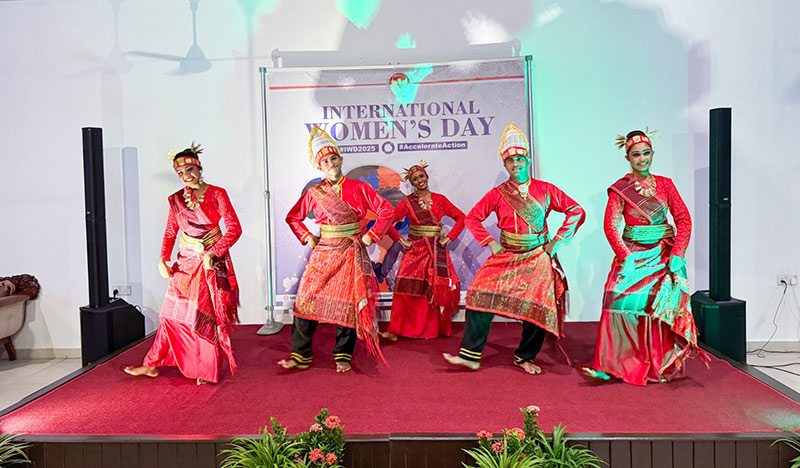
The Embassy of the Republic of Indonesia in sri Lanka hosted the International Women’s Day ceremony at thier residence.
Ambassador of Indonesia Dwi Gustina Tobing invited a large gathering of invitees including the Minister of Women and Child Affairs Saroja Savithri Paulraj who was the Chief Guest. CBL Group Managing Director Sheamalee Wickramasighe, popular musician Umaria Sinhawansa and Stephanie Siriwardena also addressed the gathering. The ambassador looking elegant was busy welcoming the guests at her residence.
An evening of camaraderie, glitz and glamour. The event featured an insightful session aimed to empower women, and served as a tribute to the commitment of women who has contributed immensely. The ambassador in her speech said by celebrating the achievements of women and amplifying their voices, we pave the way for a more inclusive and equitable society, where gender does not hinder opportunity but enriches collective experiences. Here is an excerpt from the ambassador’s speech.
A warm welcome to all of you. It is an honour to host this reception in commemoration of International Women’s Day 2025.
She said ” This year’s theme, “Accelerate Action”, is a powerful call to all of us. It underscores that equality cannot wait, and that all sectors of society must work together to speed up progress in women’s rights and empowerment.”
- CBL group managing director Sheamalee addressing the gathering
- Stephani and Umaria
Around the world, we have seen tremendous strides toward gender equality in politics, economics, and social spheres. Women are increasingly taking up leadership roles, contributing to economic growth, and shaping the future of our societies.
In Indonesia, we are proud of the progress we have made in advancing women’s participation. She said
She reiterated that 127 women were elected to parliament, making up 22.1% of the seats—the highest in our post-reform history. However, this is still below our target of 30%, which means there is room for improvement.
Our new cabinet includes 14 women, both as ministers and deputy ministers, demonstrating our commitment to gender-inclusive governance.
Beyond politics, women are the backbone of Indonesia’s economy. Micro, Small, and Medium Enterprises (MSMEs) contribute over 60% to the national GDP, and 64.5% of these businesses are managed by women.
Additionally, Indonesia ranks among the top four countries globally for female business leaders
She pointed out Sri Lanka, too, has made significant strides in women’s empowerment. When I met with Minister Saroja Savithri Paulraj last week, we discussed the progress Sri Lanka has made in increasing women’s representation in politics and the economy. From women entrepreneurs driving economic growth to initiatives supporting women in leadership, Sri Lanka is showing a strong commitment to gender equality.
Many countries have made progress in advancing women’s empowerment, yet, despite this progress, we must recognize that challenges remain. Women still face barriers to equal pay, leadership opportunities, financial inclusion, and social mobility. Gender-based violence, discrimination, and unequal access to resources continue to hinder the advancement of women in many parts of the world.
This is why collaboration is crucial. By sharing experiences, policies, and best practices, we can accelerate meaningful action to bridge the gender gap.
We must continue working together, fostering partnerships that empower women economically and socially. Indonesia is committed to strengthening collaboration with Sri Lanka and other nations to create more opportunities for women, recognizing their immense importance. Invitees were able to enjoy authentic Indonesian delicacies specially curated by the Ambassador herself.
By Zanita Careem
-
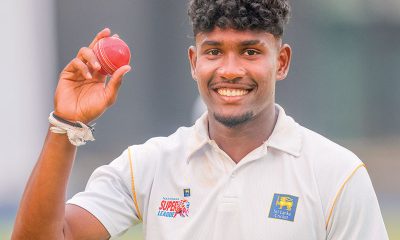
 Sports3 days ago
Sports3 days agoSri Lanka’s eternal search for the elusive all-rounder
-
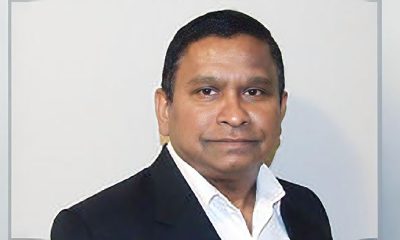
 News2 days ago
News2 days agoBid to include genocide allegation against Sri Lanka in Canada’s school curriculum thwarted
-
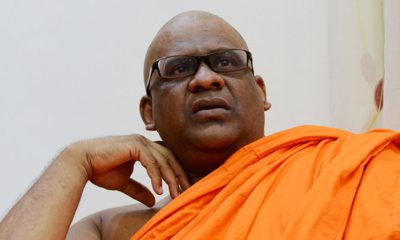
 News4 days ago
News4 days agoGnanasara Thera urged to reveal masterminds behind Easter Sunday terror attacks
-
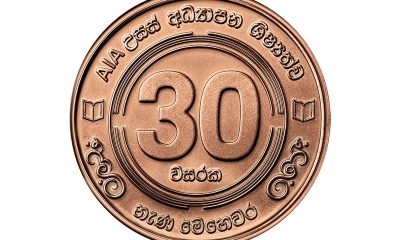
 Business5 days ago
Business5 days agoAIA Higher Education Scholarships Programme celebrating 30-year journey
-
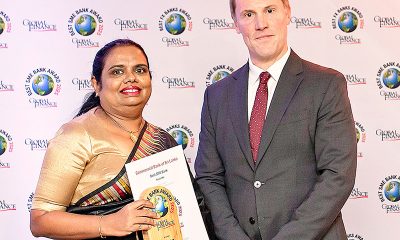
 News3 days ago
News3 days agoComBank crowned Global Finance Best SME Bank in Sri Lanka for 3rd successive year
-
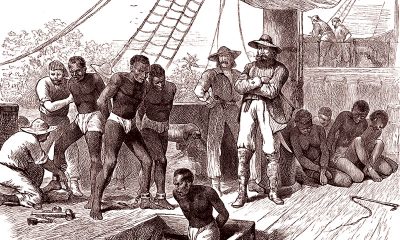
 Features3 days ago
Features3 days agoSanctions by The Unpunished
-
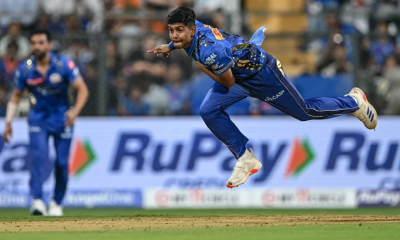
 Latest News1 day ago
Latest News1 day agoIPL 2025: Rookies Ashwani and Rickelton lead Mumbai Indians to first win
-
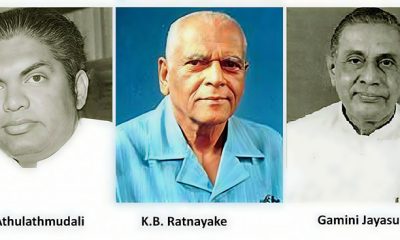
 Features3 days ago
Features3 days agoMore parliamentary giants I was privileged to know

